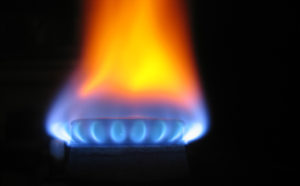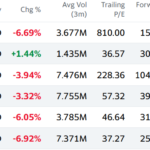 Natural gas fell on Friday but headed for a weekly gain as short-term weather forecasts called for mostly warmer-than-usual temperatures across many high-consuming states. However, a much larger-than-average jump in US gas inventories last week and expectations for more of the same to come pressured in the next weeks pressured the market down.
Natural gas fell on Friday but headed for a weekly gain as short-term weather forecasts called for mostly warmer-than-usual temperatures across many high-consuming states. However, a much larger-than-average jump in US gas inventories last week and expectations for more of the same to come pressured in the next weeks pressured the market down.
On the New York Mercantile Exchange, natural gas futures for settlement in September were down 0.93% by 9:27 GMT to trade at $3.853 per million British thermal units. The energy source rose to a 1-week high of $3.955 on Thursday and closed the day at $3.889, up 1.73%. Prices ranged between $3.893 and $3.850 on Friday.
The US Energy Information Administration (EIA) posted its weekly readings on natgas storage levels on Thursday, to reveal 88 billion cubic feet (Bcf) of natural gas were added to inventories in the week through August 15. The build was larger than the expected 83 Bcf, and is almost double the 5-year average gain for the week, while also marking the sixteenth straight week of higher-than-average injections.
Inventories were brought to 2 555 trillion cubic feet, or just 17.3% below the 5-year average, having replenished 1.733 trillion cubic feet over the past 20 weeks – a record pace. The government agency expects nationwide inventories to hold 3.463 trillion cubic feet at the end of October, which would require average weekly builds of 83 bcf, compared to the average of 67 bcf.
Next week’s inventory report is also projected to come in well bearish, albeit leaner than recent ones.
US weather
According to NatGasWeather.coms August 22nd – August 28th weather outlook, very warm temperatures across the southern and central US will continue to drive regionally strong cooling demand as highs extend into the mid 90s and lower 100s. However, readings across much of the US will ease by the middle of next week as weather systems track through the northern US, bringing below normal temperatures. The first cool wave will be felt over the Northeast this weekend.
Overall cooling demand during the next seven days will remain moderate compared to normal thanks mainly to the 3-10 degrees Fahrenheit above-normal temperatures across the southern US and Midwest.
However, more above-average injections are to come in the next weeks as much cooler conditions are already pushing into the Rockies and will gradually extend into the Plains and Midwest next week, bringing highs down.
During the August 29th – September 4th span, NatGasWeather.com expects the cooler weather system that had previously established over the Midwest and Northeast to dissipate and give way to several days of warming, especially over the southern and eastern US. However, temperatures are not projected to get hot to an extent that would cause natural gas prices to spike too high as additional Canadian weather systems will try to enter the northern US early September, carrying below-usual temperatures.
“We continue to believe the bias remains to the downside as weather systems will continue to sweep across many regions of the US through the first week of September, NatGasWeather.com analysts said in a report. “There is also potential for cooling to push fairly deep into the central and eastern US as well. If just one of these weather systems play out to the cold side, builds of 90+ Bcf will return as summer heat begins to wane.”
Cyclone possibility
Natural gas drew some support as a low pressure area east of the Windward Islands has a 60% chance of becoming a cyclone formation within the next 48 hours, but according to broad expectations it will remain well away from key natural gas infrastructure in the Gulf of Mexico.
According to AccuWeather.com, the high in New York on August 24th will be 79 degrees Fahrenheit, 3 below average, before jumping to 84 degrees on August 31st, 4 above usual. Chicago will reach 80 degrees on August 24th, compared to the average of 82, before falling to 73 degrees, or 8 below normal, four days later.
On the West Coast, Sacramento will see readings maxing out at 87 degrees on August 24th, 3 beneath seasonal, before surging to as much as 98 degrees on August 30th. To the South, the high in Texas City will be 94 degrees on August 25th, compared to the average of 90, before easing to 84 degrees four days later.
Technical support and resistance
According to Binary Tribune’s daily analysis, September natural gas futures’ central pivot point stands at $3.877. In case the contract penetrates the first resistance level at $3.967 per million British thermal units, it will encounter next resistance at $4.046. If breached, upside movement will probably attempt to advance to $4.136 per mBtu.
If the energy source drops below its first support level at $3.798 per mBtu, it will see support at $3.708. If the second key support zone is breached, the power-station fuel’s downward movement may extend to $3.629 per mBtu.





